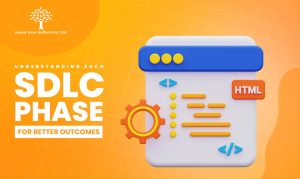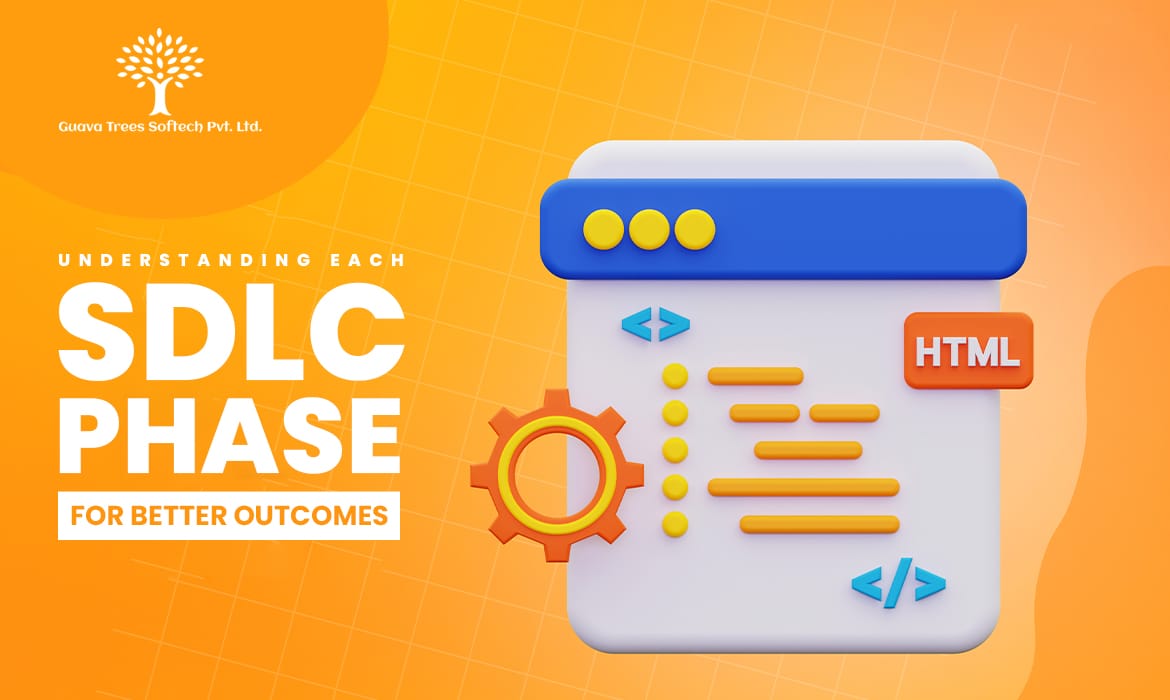
The Software Development Life Cycle (SDLC) defines the phases the development team goes through in the building of software, starting with the initial planning phase, going through development, and ending with deployment and maintenance activities. Following an SDLC ensures that throughout the project, progress is being measured, expectations from the stakeholders are being met, and the end product is of good quality.
So why has SDLC attained such importance? What is it in every phase that contributes to the success of projects? Why knowledge of the phases is important? Enter a stepwise approach.
Planning Phase: Building the foundation
The planning phase is an extremely important phase wherein everything starts, and honestly, it’s the most vital part. Without a proper plan, it’s difficult to do anything right. And how do you build something when you do not know where you are going? With this phase, we will look at defining the project goals, breaking them down into specific objectives, and outlining the scope, timelines, resources, and requirements based on relevant customer feedback, thereby creating a comprehensive roadmap.
The planning phase is the backbone of any project. For any project, at the end of this phase, the entire team should be aware of their project roles and tasks.
Importance:
There will be challenges identified during planning which will set the basis for an effective execution of the project. Without proper planning, project risks include delayed milestones, budget overruns, and unmet objectives.
Analysis phase: Gathering requirements
The phase of analysis in the Software Development Life Cycle (SDLC) is focused on identifying and documenting important requirements for the software project. In this phase, before proceeding to later stages, the feasibility of the project is studied in terms of technical, financial, and operational viability. The analysis phase defines the needs and how they will be met.
Why it is important
In-depth analysis tends to reduce misunderstanding among the stakeholders and ensures alignment with the goals of the organization.
Design Phase: Creation of a blueprint.
The Design phase of the Software Development Life Cycle (SDLC) changes collected requirements into actionable solutions. This is the phase where blueprints are composed for the software project under development.
During this phase, the developers prepare architectural designs, database modeling, and GUI prototypes. During this time, the development team shall assess how the final software product will look and hence function, as well as comport itself under the influence of the users.
Why it’s important
An accurate design guarantees a seamless user experience.
Implementation phase: Coding phase
The Implementation phase is a crucial phase in the Software Development Life Cycle (SDLC) in which developers write and compile code according to design specifications.
Why it is important
By following coding standards and conducting regular code reviews, software becomes more reliable, easily maintainable, and less buggy. Such practices help to identify issues early to improve code quality and provide a more efficient process of development.
Testing phase: Ensuring Quality
The testing phase is a crucial aspect of the Software Development Life Cycle (SDLC). But why is it so crucial? It is during this phase when the developers and testers test that the software runs as per expectations and meets all the requirements before handing it over to the user.
Does everything run well? Are any bugs or issues that may affect usability hidden from view? The goal here is to identify all problems so that a solution may be implemented and convey a trustworthy and seamless experience to users who have access to fully working software.
Importance
Able to eliminate issues even before they reach the end-users, testing aids greatly in saving time and costs in the long run, all in the name of enhanced user satisfaction. This phase ensures that the software runs well in the intended environment.
Deployment phase: Launching the product
The deployment phase is one of the significant steps in either Software Development Life Cycle (SDLC). But do you know? What makes it so important? This is where truly this product software will now live outside the development environment so real users will experience it for the very first time.
Is everything working? Are there any last-minute issues that need fixing? The aim here is to make sure the transition goes as unobtrusively as possible so users can receive a fully functional and reliable product from day one.
Importance
After successful testing is done, it is ready for deployment. A smooth deployment guarantees a good user experience.
Maintenance phase: Continuous support
The last step in the Software Development Life Cycle (SDLC) is the maintenance phase, which begins after the software is deployed. But what happens next? In this phase, we focus on ensuring that the software is functioning smoothly and remains relevant as time goes by.
Does the software need any features? Is it working fine as expected? Are users encountering issues or is there any request for improvements? All these are included in the maintenance phase, where the software is updated, performance is monitored, feedback is taken care of, and continuous support is provided for the smooth running of things.
Importance
Good maintenance ensures that the software keeps up with and meets the user’s needs and is also relevant and trustworthy in a constantly changing environment.
Do you know which is the Right SDLC Model for Your Project?
Waterfall Model:
The waterfall model is suitable for very simple and plainly defined projects with stable requirements. If flexibility is sought and continuous changes are to be expected, we have better candidates in Agile or Iterative models.
Agile Model:
Agile is a flexible method of working where projects are broken down into smaller parts so that feedback can happen regularly with adjustment.
Scrum Model:
Scrum is a light framework that is agile and is most suitable for small-scale cross-team projects.
DevOps Model:
DevOps is a jargon for collaborating where teams have come together to build and release software faster through automation and collaboration.
Final Thoughts:
Ever thought of Why SDLC is important for software projects? We have studied the seven important phases of the software development life cycle in detail as a set of activities performed by software teams. Each phase is important for any software team developing a software product; its phases, are implementation, testing, support and maintenance. Trouble arises where these phases are foregone, such as confusion, or worse, monetary loss. SDLC is a structured process that ensures Software Development projects cut down on development costs, enhance the quality of products, increase time speed to market, and enhance customer satisfaction.







